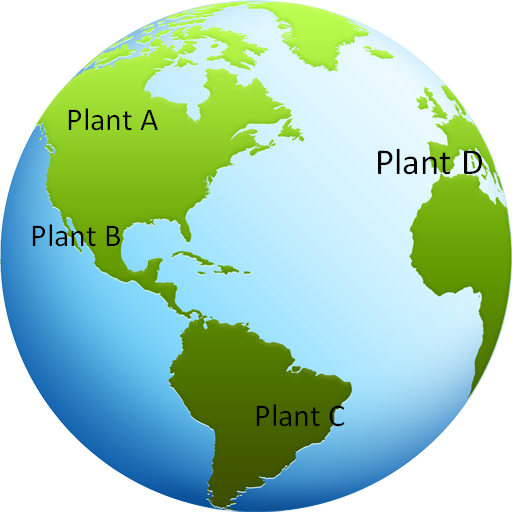Capacitated plant location - case study P1
Supply Chain Analytics in Python

Aaren Stubberfield
Supply Chain Analytics Mgr.
Context
Multiple options to meet regional product demand
| Option | Pro | Con |
|---|---|---|
| Small manufacturing facilities within region | Low transportation costs, few to no tariffs or duties | Overall network may have excess capacity, cannot take advantage economies of scale |
| A few large manufacturing plants and ship product to region | Economies of scale | Higher transportation, higher tariffs and duties |
Capacitated plant location model
- Capacitated Plant Location Model$^{1}$
- The goal is to optimize global Supply Chain network
- Meet regional demand at the lowest cost
- Determine regional production of a product
1 Chopra, Sunil, and Peter Meindl. _Supply Chain Management: Strategy, Planning, and Operations._ Pearson Prentice-Hall, 2007.
Capacitated plant location model
Modeling
- Production at regional facilities
- Two plant sizes (low / high)
- Exporting production to other regions
- Production facilities open / close

Decision variables
What we can control:
- $x_{ij}$ = quantity produced at location _i_ and shipped to _j_
- $y_{is}$ = 1 if the plant at location _i_ of capacity _s_ is open, 0 if closed
- $s$ = low or high capacity plant
Objective function
Minimize $z = \sum_{i=1}^{n}(f_{is} y_{is}) + \sum_{i=1}^{n} \sum_{i=1}^{m} (c_{ij} x_{ij})$
- $c_{ij}$ = cost of producing and shipping from plant _i_ to region _j_
- $f_{is}$ = fixed cost of keeping plant _i_ of capacity _s_ open
- $n$ = number of production facilities
- $m$ = number of markets or regional demand points
from pulp import * # Initialize Class model = LpProblem("Capacitated Plant Location Model", LpMinimize) # Define Decision Variables loc = ['A', 'B', 'C', 'D', 'E'] size = ['Low_Cap','High_Cap'] x = LpVariable.dicts("production",[(i,j) for i in loc for j in loc], lowBound=0, upBound=None, cat='Continous') y = LpVariable.dicts("plant",[(i,s) for s in size for i in loc], cat='Binary')# Define objective function model += (lpSum([fix_cost.loc[i,s]*y[(i,s)] for s in size for i in loc]) + lpSum([var_cost.loc[i,j]*x[(i,j)] for i in loc for j in loc]))
Summary
Capacitated Plant Location Model:
- Finds a balance between the number of production facilities
- Model decision variables:
- Quantity of production in a region and exported
- High or low capacity facilities open or closed
- Reviewed objective function
- Sums variable and fixed production costs
- Reviewed code example
Review time
Supply Chain Analytics in Python

